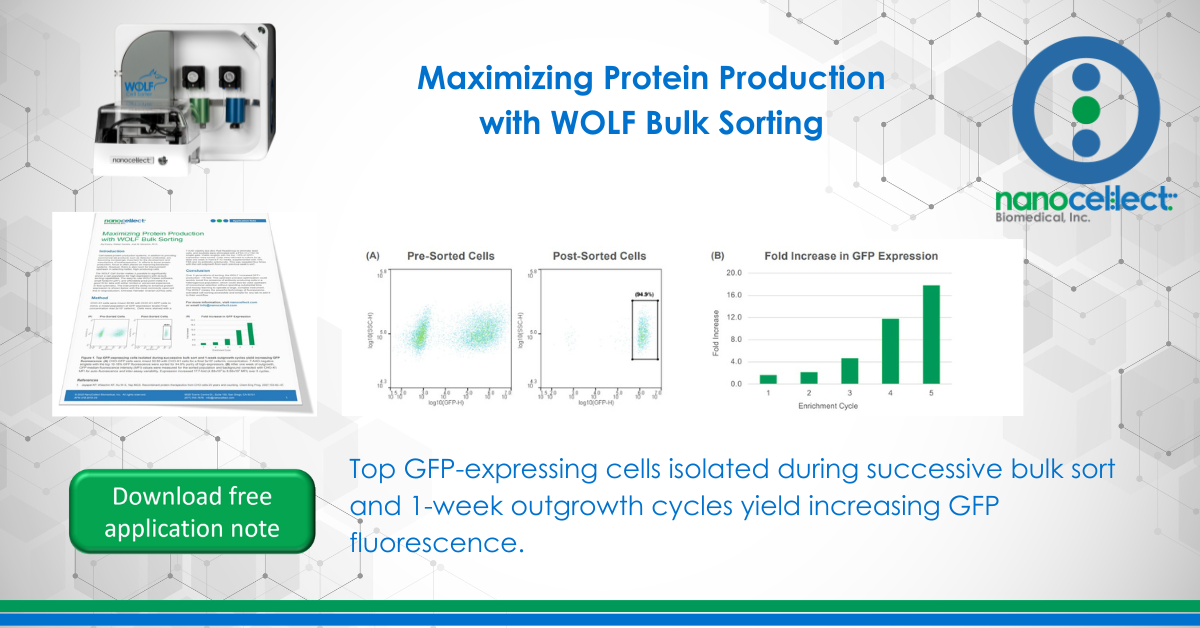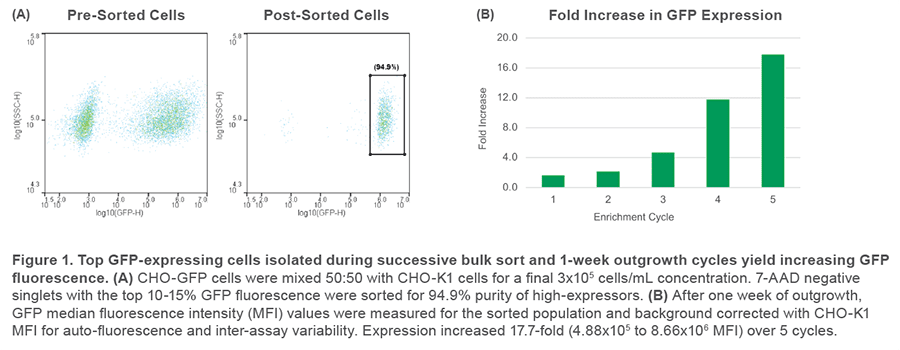Maximizing Protein Production with WOLF Bulk Sorting

Introduction
Cell-based protein production systems, in addition to providing commercial lab products such as detection antibodies, are becoming increasingly important for the development and manufacture of biotherapeutics.1 In efforts to boost protein production, focus is often placed on improving bioreactor systems. However, there is also room for improvement upstream in selecting better, high-producing cells.
The WOLF Cell Sorter makes it possible to significantly enrich a cell population for high expressors with its bulk sorting capabilities. The easy-to-use WOLFViewer software, small footprint (2ft3), and affordable price point make it a good fit for labs with either limited or advanced experience in flow cytometry. The instrument’s ability to enhance protein expression is shown below with the most commonly used cell line in bioproduction, Chinese Hamster Ovarian (CHO) cells.
Method
CHO-K1 cells were mixed 50:50 with CHO-K1-GFP cells to mimic a mixed population of GFP expression levels. Final concentration was 3×105 cells/mL. Cells were stained with a 7-AAD viability dye (Bio-Rad ReadiDrop) to eliminate dead cells, and doublets were eliminated with a FSC-H v FSH-W singlet gate. Viable singlets with the top ~15% of GFP+ expression were sorted. Cells were returned to culture for at least one week in Ham’s F-12 media, supplemented with 10% FBS and 2x antibiotic-antimycotic. This was repeated four times with the cell outgrowth from each previous week’s sort.
Conclusion
Over 5 generations of sorting, the WOLF increased GFP+ production ~18-fold. This upstream process optimization could quickly boost the presence of antibody-producing cells in a heterogenous population, which could also be used upstream of monoclonal selection without spending substantial time and money learning to operate a large, complex instrument. The WOLF makes the powerful technology of fluorescenceactivated cell sorting accessible and simple for any lab to add it to their workflow.
References
1. Jayapal KP, Wlaschin KF, Hu W-S, Yap MGS. Recombinant protein therapeutics from CHO cells-20 years and counting. Chem Eng Prog. 2007;103:40–47.
APN-018

